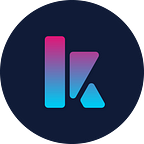QLC Chain TestNet Launch to Realize Monetization of Network Bandwidth
Last month, we published the Multidimensional Block Lattice Wallet and Explorer. Now, the QLC team is excited to announce the launch of the TestNet Multidimensional Block Lattice structure.
The QLC Chain enables network users to monetize their own network resources, namely their bandwidth, to earn cryptocurrency by sharing their network resources. QLC Chain’s mission is to build a decentralized ledger for network services and provide a more secured, and on-demand online experience.
The shared bandwidth can be monetized in different ways and benefit the whole ecosystem of the decentralized mobile network. Firstly, the QLC ecosystem has a working dApp, WinQ (https://winq.net/), which is a decentralized VPN marketplace. Bandwidth providers can register their VPN on the dApp and earn QLC on an hourly basis.
Secondly, the network capabilities can develop multiple decentralized business models on top such as CDN, firewall, virtual routing etc. Therefore, the Operations Support System (OSS) and Business Support System(BSS) can be orchestrated using blockchain technology. According to Transparent Market research, a global market research, analysis, and intelligence firm, OSS BSS System and Platform Market Will be worth US$70.97 Billion by 2024.
We are honored to be an open source project and appreciate the developer community’s contribution in submitting issues to help us improve the development of the public chain.
The source code is available here:
- TestNet source code; https://github.com/qlcchain/qlcchain-classic
- TestNet web wallet: https://github.com/qlcchain/QLCWallet
- TestNet Wallet server: https://github.com/qlcchain/QLCWallet-Server
The QLC Chain is the next generation public chain for decentralized Network-as-a-Service (NaaS) with embedded function nodes using the Multidimensional Block Lattice structure. Our mission is to build a decentralized ledger for network services and provide a more secured, and on-demand online experience.
The QLC Chain deploys a Multidimensional Block Lattice structure and applies the virtual machine to manage and support integrated smart contracts. Additionally, the public chain utilizes dual consensus: Delegated Proof of Stake (DPoS), and Shannon Consensus, a novel concept proposed the QLC Chain team. As of today, during the internal testing and the community exclusive testing, there has been 105 accounts generated, and 1,232 transaction completed with the highest TPS reaching 3,500.
Learn more about the Multidimensional Block Lattice Structure here:
Some key features of the TestNet include
- Multi-token transaction based on the multidimensional block lattice structure
- Smart contract storage on chain and implemented DPoS consensus
- Web Wallet and Explorer
- Instant transaction
- Peak TPS 3,500
The next step for the developer team is to develop the QLC Node using Golang, QLC WASM virtual machine, QLC data storage node, and QLC Oracle node.
We’ll be hosting an AMA in a couple hours (2pm UTC)— make sure to follow us on Twitter for the YouTube Live link!
